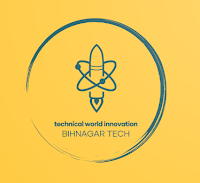WHAT IS FUSION WELDING?
Fusion welding is a process that uses heat to join or
fuse two or more materials by heating them to melting point. The process may or
may not require the use a filler material. External application of pressure is
not required for fusion welding processes, except for resistance welding, where
substantial contact pressure is required during welding for sound joining.
Fusion Welding Processes
Fusion welding processes can be grouped according to the
source of the heat, for example, electric arc, gas, electrical resistance and
high energy.
These processes include:
Arc Welding Processes - with the most common processes being:
Shielded Metal Arc Welding (SMAW),
also known as manual metal arc welding (MMA or MMAW), flux shielded arc welding
or stick welding. Suitable for welding ferrous and non-ferrous materials in all
positions.
Metal Inert Gas Welding (MIG) and Metal
Active Gas Welding (MAG), also known as Gas Metal Arc Welding
(GMAW). MIG and MAG welding are the most common arc welding processes, in which
an electric arc forms between a consumable wire electrode and the workpiece
leading them to melt and join. Both use a shielding gas to protect the weld
from airborne contaminants, or oxidation in the case of MIG welding.
Tungsten Inert Gas Welding (TIG),
also known as Gas Tungsten Arc Welding (GTAW). This arc process uses a
non-consumable tungsten electrode to create the arc between the electrode and
the base plate. An inert shielding gas is used to protect from oxidation or
other atmospheric contamination. This process can be used autogenously on thin
parts, but will require the addition of a wire, rod, or consumable to be added
for thicker parts.
Plasma Arc Welding (PAW).
This process uses an electric arc created between an electrode and the torch
nozzle. The electric arc ionises the gas (usually argon) in the chamber
creating what is called a 'plasma.' It is then forced through a fine bore
copper nozzle that constricts the arc and directs it to the workpiece, allowing
the plasma arc to be separated from the shielding gas (which is usually made
from a mixture of argon and hydrogen).
Submerged Arc Welding (SAW).
This frequently used arc welding process uses a continuously fed consumable
electrode and a blanket of fusible flux which becomes conductive when molten
and provides a current path between the workpiece and the electrode. The flux
also prevents spatter and sparks while suppressing ultraviolet radiation and
fumes.
Flux Cored Arc Welding (FCAW). Developed
as an alternative to SMAW, this process uses a continuously fed consumable
electrode with a flux and a constant voltage or constant current power supply.
Sometimes using a shielding gas this process can also just use the flux to
provide protection from the atmosphere.
Gas Welding Processes - the most common
process being:
Oxy-Fuel Welding, also
known as Oxyacetylene Welding but commonly called gas welding, this process
uses a hand-held torch or blow pipe and a mixture of oxygen and acetylene which
combusts to create a flame.
Resistance Welding Processes
Resistance Spot Welding.
This fast welding process delivers heat between two electrodes according to the
material properties and thickness of the workpieces. The welding current is
concentrated to a small spot as the workpieces are simultaneously clamped
together.
Resistance Seam Welding. This
variant of spot welding produces a series of overlapping nuggets of a
continuous joint by replacing conventional spot-welding electrodes with wheels
which rotate as the workpieces are fed between them.
High Energy Welding Processes - with the main
ones being:
Electron Beam Welding (EBW).
This fusion process is performed under vacuum conditions, using a beam of high
velocity electrons to melt the workpieces as the electrons generate heat upon
penetration into the material. Welds are often deep and narrow.















1 टिप्पणियाँ
Good sir
जवाब देंहटाएं